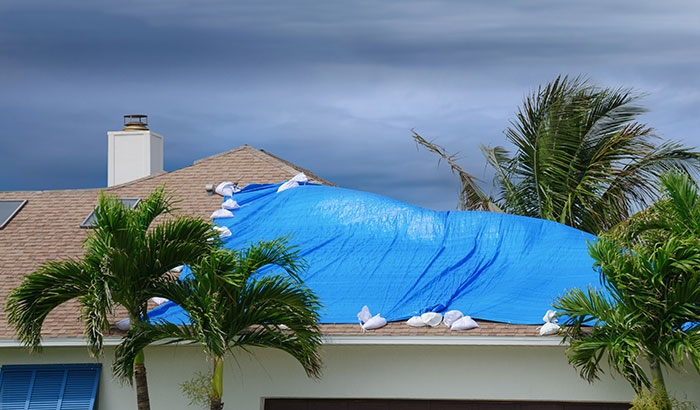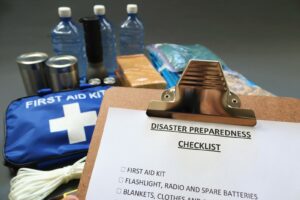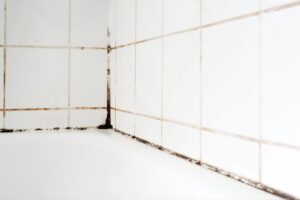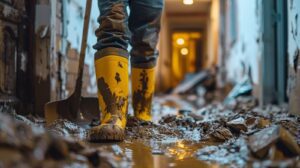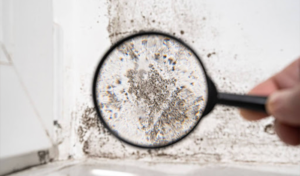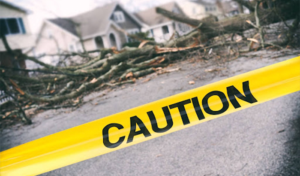When it comes to weather-related disasters, few events can top storm damage. Whether it’s high winds, hail, lightning, or heavy rainfall, the potential for storm damage is a constant threat to homes and businesses in many parts of the world.
From paying attention to weather patterns to securing structures and having a preparedness plan in place, there are several steps that individuals can take to minimize the risk of storm damage and protect their property in the event of a severe weather event.
In this article, we will explore some practical tips that homeowners and business owners can follow to reduce the impact of storms and keep their properties safe.
1. Understanding Local Weather Patterns
Understanding local weather patterns is a crucial first step in protecting your home or business from storm damage. Different regions of the world experience different weather patterns, which can include heavy rainfall, high winds, lightning strikes, and hail storms. By staying informed about the weather conditions in your area, you can take proactive steps to minimize the risk of damage to your property.
One way to stay informed is to regularly check weather forecasts from reliable sources such as the National Weather Service or local news outlets. Attention to severe weather alerts can give you advanced warning of a storm and allow you to take appropriate action.
Additionally, many regions have unique weather patterns that may not be well understood by people unfamiliar with the area. For example, some regions may be prone to flash flooding, while others may experience high winds or hail storms. By learning about the unique weather patterns in your area, you can take steps to prepare your property for potential storm damage.
If you experience storm damage, disaster restoration and restoration services can help you repair and restore your property to its pre-storm condition. These services can include removing debris, drying out water-damaged areas, repairing or replacing damaged structures, and restoring the overall appearance of your property.
2. Preparing Your Home For a Storm
Preparing your home for a storm is one of the most important steps you can take to minimize the risk of storm damage. You can take several proactive measures to prepare your property for a severe weather event.
One key step is to secure all windows and doors. You can do this by installing storm shutters or boarding up windows with plywood. Reinforcing garage and entry doors with heavy-duty bolts can also help prevent damage.
It’s also important to trim any trees or branches that could fall onto your home during a storm. Loose branches and debris can become dangerous projectiles during high winds and cause significant damage.
Additionally, maintaining your gutters and downspouts can help prevent water damage by ensuring that water is properly directed away from your home.
If you live in an area prone to flooding, it’s important to take extra precautions to protect your property. Consider investing in flood barriers or sandbags to prevent water from entering your home. If you have a basement, ensure all valuables and important documents are stored in a safe, elevated location.
3. Protecting Your Roof
Protecting your roof from storm damage is essential for maintaining the integrity of your home or business. During severe weather events, high winds and hail can cause significant damage to roofs, leading to costly repairs or even complete replacement. Therefore, taking proactive measures to protect your roof can help you avoid the need for disaster restoration and restoration services.
A critical step in protecting your roof is to inspect it regularly for any signs of damage. Look for loose or missing shingles, cracks or splits, and other signs of wear and tear. If you notice any damage, it’s important to repair it as soon as possible. Ignoring minor problems can lead to larger — sometimes more expensive — issues down the road.
Choosing the right roofing materials can also help protect your roof from storm damage. Metal and tile roofs are often more durable than traditional asphalt shingle roofs and can withstand higher winds and hail. Additionally, adding extra layers of underlayment beneath the roofing material can provide an extra layer of protection.
If you live in an area prone to severe weather events, such as hurricanes or tornadoes, consider investing in hurricane straps or other roof anchors to secure your roof to the structure of your home or business. These measures can help prevent the roof from being lifted off during high winds.
4. Securing Outdoor Structures
Securing outdoor structures is an important step in protecting your property from storm damage. Garages, sheds, and other structures can be particularly vulnerable during severe weather events, and damage can lead to costly repairs or even complete replacement. Taking proactive measures to secure these structures can help minimize the risk of damage and reduce the need for disaster restoration and restoration services.
One important step in securing outdoor structures is to reinforce the doors. You can do this by adding extra hinges or locks or installing a heavy-duty deadbolt. Additionally, adding weather stripping around the door can help prevent water from entering during a storm.
If your outdoor structure has windows, consider installing storm shutters or boarding them up with plywood before a storm hits. Loose debris can become dangerous projectiles during high winds and cause significant damage.
Anchoring outdoor structures to the ground is also vital for preventing damage. Securely anchoring sheds, carports, and other structures to a concrete foundation can help prevent them from being lifted off the ground during high winds.
Regular inspections can also help prevent damage to outdoor structures. Check for loose or missing shingles, cracks or splits, and other signs of wear and tear. If you notice any damage, it’s important to repair it as soon as possible.
In the event that your outdoor structure does sustain damage during a storm, it’s important to contact disaster restoration and restoration services as soon as possible. These professionals can assess the extent of the damage and provide you with a plan for repair or replacement.
5. Protecting Your Car From Storm Damage
Protecting your car from storm damage is important in minimizing the impact of severe weather events. Hail, high winds, and flooding can all cause significant damage to vehicles, leading to costly repairs and even complete replacement. Therefore, taking proactive measures to protect your car can help you avoid the need for disaster restoration and restoration services.
One important step in protecting your car from storm damage is to park it in a safe location. Park your car in a garage or carport whenever possible to protect it from hail and wind damage. If you don’t have access to a garage or carport, consider parking your car under a covered area such as a gas station, awning, or bridge.
If a storm is approaching and you can’t park your car in a covered area, consider using blankets or a car cover to protect it from hail damage. Additionally, placing floor mats on the windows can help prevent damage from flying debris during high winds.
If flooding is a concern in your area, be sure to park your car in a location that is not prone to flooding. Avoid parking near rivers or other bodies of water, and park on higher ground if possible. If a flood is imminent, move your car to a higher elevation to minimize the risk of damage.
If your car does sustain damage during a storm, it’s important to contact your insurance company as soon as possible. They can guide you through the claims process and help you get your car repaired or replaced.
6. Emergency Preparedness Plan
Being prepared for a severe weather event is essential for minimizing the impact of storm damage on your property. Emergency preparedness involves taking proactive steps to ensure your safety and the safety of your loved ones, as well as preparing your home or business for potential damage.
Creating an emergency preparedness kit should be one of your top priorities when preparing for a storm. This kit should include essentials such as non-perishable food, water, flashlights, batteries, and a first aid kit. Additionally, consider including a battery-powered radio and extra chargers for your cell phone. Keep your emergency preparedness kit in a safe, easily accessible location in case you need to evacuate your home quickly.
If a severe storm is on the way, it’s important to stay informed and follow any evacuation orders issued by local officials. Make sure you plan where you will go if you need to evacuate, and make arrangements for any pets or other family members who may need assistance.
If you decide to ride out the storm at home, ensure your home is properly prepared. This includes securing all windows and doors, trimming trees and branches, and ensuring gutters and downspouts are clear of debris.
In the event of a power outage, it’s important to have a backup plan for heating and cooling your home. Consider investing in a generator or other backup power source to keep your home running during an outage.
If your home or business does sustain damage during a storm, it’s important to contact disaster restoration and restoration services as soon as possible. These professionals can assess the extent of the damage and provide you with a plan for repair or restoration.
Let’s Get Through This Storm Together at Total Flood & Fire Restoration
Taking proactive measures to protect your property before and during a storm can help minimize the risk of damage. However, if storm damage does occur, it’s important to have a plan in place for restoration and repair.
Total Flood & Fire Restoration is your go-to restoration company for all your water, fire, storm, and mold damage needs, as well as sewage and biohazard cleanup. Our licensed and certified technicians are available 24/7 to restore your residential or commercial space to its original condition.
Don’t let storm damage cause undue stress and worry. Contact Total Flood & Fire Restoration at 385-442-9804 or through our online form today for all your restoration needs.

